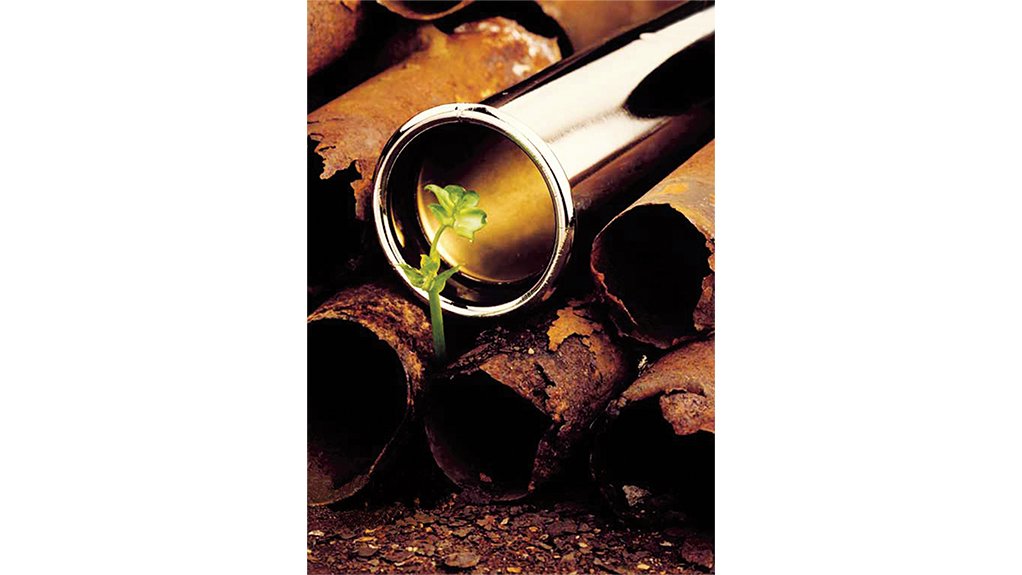Stainless steel manufacturer Columbus Stainless, based in Middelburg, Mpumalanga, says it has produced more than one-million tons of its 3CR12 chromium-containing corrosion-resistant stainless steel for a variety of applications for local and international clients.
3CR12 is a locally manufactured, patented and highly sophisticated steel which took more than ten years of research and development to make the product what it is today, Columbus Stainless market development manager Lerato Mashigo tells Engineering News.
“3CR12 is considered as a durable, multifunctional and adaptable metal while still upholding the notable benefits of stainless steel, including strength, good corrosion resistance and good welding properties,” she enthuses.
Its notable corrosion resistance is especially evident in wet sliding abrasion conditions such as those in coal mining and materials handling.
“3CR12 was developed to bridge the gap – in terms of strength, toughness and corrosion properties – between the conventional steels, such as bare, galvanized or painted carbon steel, and the more highly alloyed stainless-steel grades, such as 304 and 316,” she adds.
Additionally, it contains more than 10.5% chromium in its makeup.
This stainless steel variant performs exceptionally well in abrasive-corrosive conditions and has, consequently, been quite successful in materials handling applications, par ticularly in coal processing and handling plants, says Mashigo.
It is used for applications in agroprocessing, such as handling and processing equipment, handrails, floor gratings and walkways, with proven longevity in roofing and cladding applications – even in highly corrosive ammonia containing environments such chicken farms, piggeries and other livestock holding facilities.
Columbus Stainless continues to produce stainless steel grades, which are deemed the most preferred corrosion-resistant materials of choice, owing to its collective life-cycle cost, which ensures a cost-effective option throughout the operational lifespan of any equipment or structure coated in stainless steel.
Life-cycle costing takes into consideration the initial material input cost, fabrication cost, maintenance and refurbishment costs, the cost of lost production because of downtime, and possible replacement cost over a defined product lifespan.
Mashigo stresses that stainless steel generally has a higher input cost, compared with other competitive materials; however, its characteristic corrosion-resistant properties in most environments enable it to maintain structural integrity without the need for additional surface coating systems or corrosion allowances.
Edited by: Zandile Mavuso
Creamer Media Senior Deputy Editor: Features
EMAIL THIS ARTICLE SAVE THIS ARTICLE
ARTICLE ENQUIRY
To subscribe email subscriptions@creamermedia.co.za or click here
To advertise email advertising@creamermedia.co.za or click here













